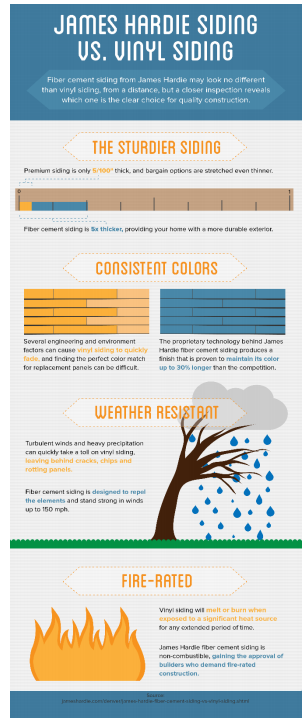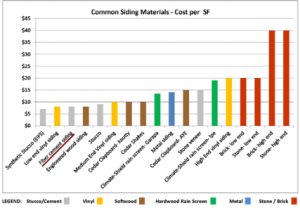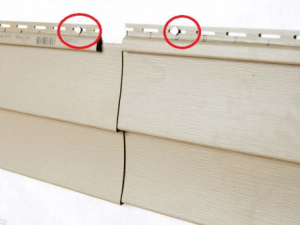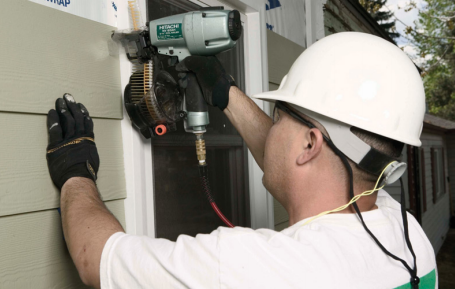Fiber Cement Hardiplank Siding From James Hardie…
Beats All Other Siding Materials,
Hands Down – It’s Not Even Close.
 Lets face it: there are a lot of companies out there selling siding—and most of it’s the flimsy vinyl variety that just plain looks bad on your home, and worse, does not last in the Pacific Northwest.
Lets face it: there are a lot of companies out there selling siding—and most of it’s the flimsy vinyl variety that just plain looks bad on your home, and worse, does not last in the Pacific Northwest.
Many homeowners buy vinyl siding because they THINK (or have been told) that it costs less than fiber cement siding. But that isn’t really true. When you factor in upkeep, product longevity, cleaning, and repairs, fiber cement James Hardie siding – known as hardiplank siding – is the “cheaper” way to go. And that holds true for any home siding material you want to compare it to.
Just take at this price comparison chart:

As you can see, the only thing that beats fiber cement siding is a low-end (cheap) vinyl siding or synthetic stucco. One simply won’t last and both simply look terrible on your home.
Step up to the gold-standard of siding materials, fiber cement, from the award-winning James Hardie siding company. It has the same life expectancy as brick, can withstand winds up to 140 miles per hour, and it requires little to no maintenance for up to 20 years! And did we mention it looks absolutely amazing? James Hardie’s fiber cement “hardiplank” siding has incredibly deep, rich colors that make a home look fantastic and can even mimic the look of real wood. Fiber cement siding is lightweight, (made from cement fiber strands, not solid cement) and is a class A fire retardant. And it is so much more environmentally friendly as compared to petroleum based vinyl siding.
But there is another important characteristic of siding that you absolutely must consider: thermal expansion.
Thermal expansion refers to the tendency of matter to change in shape, area and volume in direct response to changes in temperature. And vinyl siding has one of the worst thermal expansion rates of any siding material on the market today. In fact, if exposed to direct sunlight at extreme temperatures, cheaper vinyl siding will actually warp…or melt.
But worse yet, the expansion and contraction that occurs with vinyl siding (especially here in Oregon with our hot summers and cold wet winters), is so severe that you cannot screw in vinyl siding for a tight seal. You must “hang” the siding on screws, through an expansion eyelet so that the vinyl siding can move.
Just look at this image:

Now compare that to Hardiplank siding installation where the siding is actually nailed in for a seamless, watertight seal.

Bottom line, if not done correctly, vinyl siding leaves entirely too many possibilities for water to seep in behind your siding and cause any number of problems. From dry rot, to mold and mildew. And it’s why we categorically refuse to install it. We been around long enough to see the damage it can cause.
In short, in every category that matters: price, longevity, beauty, protection and environment, James Hardie’s hardiplank siding is the clear winner. Give us a call for a cost estimate or more information on siding installation.
Don’t settle for anything less, you end up paying more in the long run.
